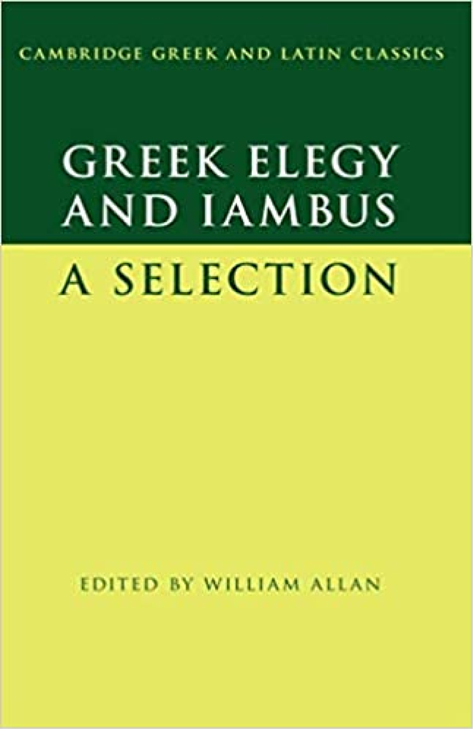
This Green and Yellow is first rate for a Classicist wanting to start learning about Greek elegy and iambics, but who does not know where to start. A cultural history lacks detail. A Loeb containing everything is a fearsome mountain to climb, especially when the texts lack explanation and analysis. Allan introduces the works of Archilochus, Semonides, Callinus, Tyrtaeus Mimnermus, Solon, Theognis, Xenophanes, Hipponax and Simonides by choosing several of their best and most interesting works. After reading this book, you do not feel an expert, but far more confident and well-informed. To many of us, these poets are names who occasionally appear in commentaries; it is splendid to be given a working knowledge of them especially as they were so famous and influential.
Most satisfying are the biographies and commentaries. Each poet is introduced and his influence and life considered. The commentaries provide cultural and linguistic detail, allowing someone with a working knowledge of Greek to read and enjoy the poems without a lexicon. Allan has given enough of a thread of language to lead us through the labyrinth. Nonetheless, this is a very scholarly book and highly suitable for top level academic reference. It could, with care, also be used with a strong A Level Greek class. Of particular note would be Archilochus 1 (about war and poetry), 17a (the Telephus myth); 42-3 (obscene poetry); 172-81 (the fox and eagle fable); Semonides 7 (the tirade against women – the commentary could be used for teaching Greek opinions about women); Tyrtaeus 5-7 (Spartan militarism); Mimnermus 2 (brevity of life – N.B. he is the writer of Smyrneis mentioned by Callimachus); Solon 4 (the necessity of restraining the wealthy elite – all are useful for teaching Democracy); Theognis 53-68 (an aristocratic response to democratic revolution and the nature of homoeroticism); Xenophanes’ counter-cultural ideas presented in poetic form in order to reach a wider audience than academic prose – 1 (a self-referential hymn about the symposium), 2 (praise of intellect over athletic prowess), B14 DK (a challenge to the anthropomorphic nature of the gods, a theory which influenced Plato); Hipponax's street language and choliambics and seduction of a free Greek woman (13-14; 16-17); Simonides 11 (the Plataea Hymn) shows Greek confidence following 479 B.C.
There is a good map, bibliography, introduction with notes upon metre and the textual tradition. I really enjoyed reading and engaging with these bawdy, intellectual, amusing, thought-provoking, and now more accessible poems.


